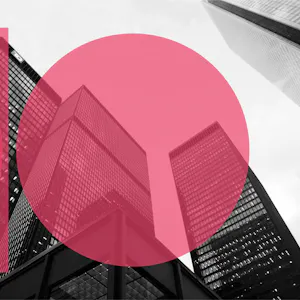Emerging threats

We support organisations striving to build a trustworthy, safe online environment where users can engage authentically in their communities.
Cross-sector corporatesWe support international government organisations and NGOs working to provide infrastructure or improve the capabilities, security and resilience of their nation.
International programmes and developmentWe support commercial organisations operating in a digital world, seeking to protect their reputation and prevent business disruption caused by cyber attacks and compliance breaches.
UK government and public sectorWe support UK government organisations responsible for safeguarding critical infrastructure, preserving public trust, and maintaining national security.



Requirement 1 in the Payment Card Industry Data Security Standard (PCI DSS) is largely concerned with firewalls and how they are such a critical protection mechanism for network security.
Let’s start with the basics. Firewalls have been with us since the late 1980s—security industry luminary Stephen Bellovin is credited with making use of the term Firewall to describe the process of filtering (including blocking) network traffic. They can be used to reduce the risk of unauthorised inbound traffic and data loss via outbound traffic.
There are different types of firewall that can operate at different levels of the TCP/IP stack; for example, a Web Application Firewall (WAF) as opposed to a packet filtering firewall that is not capable of filtering at the application layer. WAFs are included in PCI DSS requirement 6 and are not the focus of this article.
Over the ensuing years, network firewalls have steadily become more and more sophisticated to include additional functionality such as advanced threat intelligence, IDS/IPS capability and so on. However, they are not an ‘out of the box’ silver bullet solution and must be configured and maintained appropriately to continue as an effective control.
Excluding other security configuration requirements (such as not disclosing private IP addresses, and implementing anti-spoofing measures), here is a summary of the main objectives that firewall rules must meet to assist with compliance:
Over time, larger companies may have implemented an extensive firewall rule-set, and some of the common problems that can occur include rules that have become redundant and not required any more, duplicated or conflicting rules, or ones that are too promiscuous (i.e. they do not provide strict restrictions based upon source, destination, port, or protocol).
PCI DSS specifically requires organisations to carry out a review of firewall rule sets at least every 6 months (requirement 1.1.7), to ensure that only authorised rules are currently in place to match documented business justifications.
Those organisations that have a high volume of firewall changes may need to consider performing a review even more frequently.
Let’s take a look at a few examples of how firewall rules can pose a security issue and be deemed non-compliant.
Here is a simulated network diagram and matching firewall rule-set. Can you spot any potential issues?

Line 1 define network internet (0.0.0.0/0)
Line 2 define network dmz (192.170.0.0/24)
Line 3 define network secure_area (192.169.0.0/24)
Line 4 define network internal (192.168.0.0/24)
Line 5 define host firewall (192.171.0.1)
Line 6 define host acquirer (8.8.8.8)
Line 7 define host dbserver (192.170.0.4)
Line 8 define host webservers (192.170.0.1, 192.170.0.2, 192.170.0.3)
Line 9 allow ssh from (internal, dmz) to firewall
Line 10 allow (http, https) from internet to dmz
Line 11 allow (https) from internet to 192.168.0.9 comment “temporary testing for project acme”
Line 12 allow (http) from internal to dmz comment “Monitoring”
Line 13 allow (http) from 192.168.0.10 to dmz
Line 14 allow * from internal to internet comment “allow regular staff access to everything”
Here are some indicators:
There are plenty of PCI non-compliances there, which would hopefully be picked up by a diligent firewall administrator carrying out regular reviews as required by the standard. Don’t forget you will also need to maintain some form of evidence—such as details of rules amended, sign-off activity and dates—to show that the review process has occurred.
PGI consultants can help by reviewing your firewall configuration, rule-sets, and procedures as part of our PCI gap assessment service. If you would like to discuss your PCI DSS compliance, contact us to talk to one of our experts.

Back in 2023, we highlighted that the mandatory transition from ISO 27001:2013 to ISO 27001:2022 was going to come around quickly.

As a business leader, security leader, or IT decision-maker, you’re already spinning multiple plates: managing risk, meeting regulatory requirements, and making sure your systems are secure without slowing the pace of business.

Due diligence is not just a regulatory requirement but a fundamental component of a robust information security strategy.